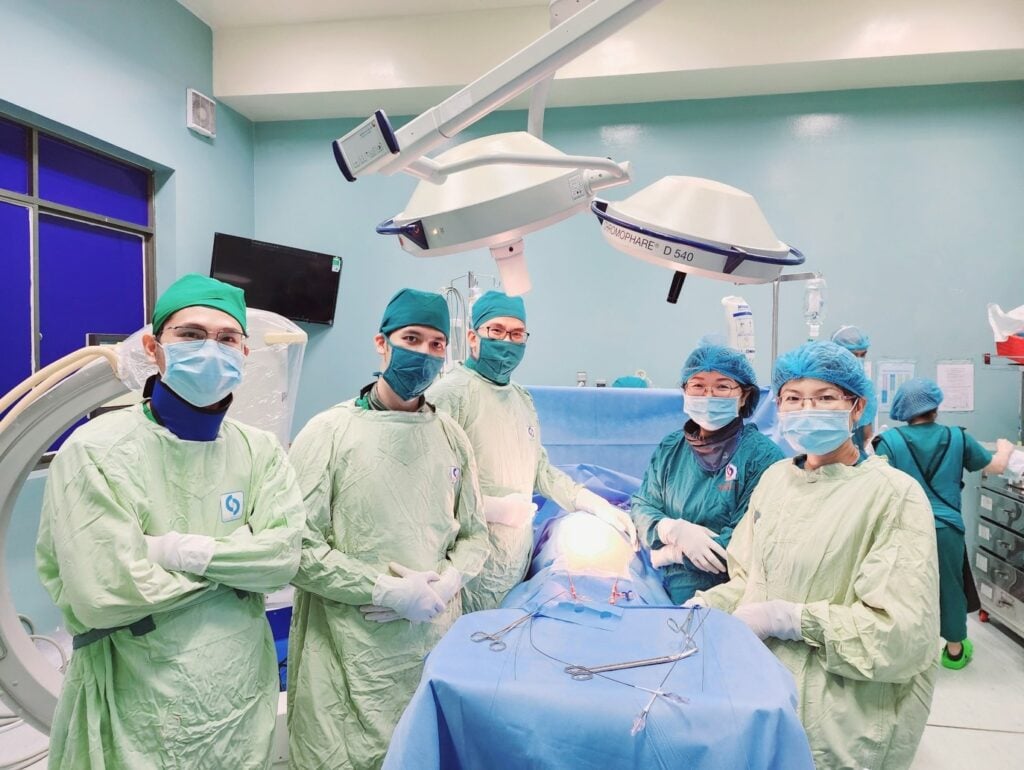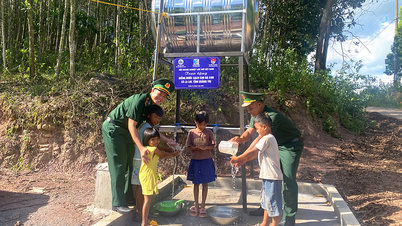On June 19, Dr. Nguyen Thi Minh Huyen, Deputy Head of Obstetrics Department - Gia Dinh People's Hospital (HCMC), said that doctors here had just saved the mother and child of Ms. NNT (38 years old, living in HCMC) with severe placenta accreta.
Ms. N. was admitted to the hospital with vaginal bleeding at 32.5 weeks of pregnancy. At the hospital, after examination and testing, the doctor recorded that she had central placenta previa, placenta accreta Percreta - the most severe form. The placenta invaded through the uterine muscle into the uterine serosa.

The surgery was successful in saving the fetus and preserving the pregnant woman's uterus. (Photo: Provided by the hospital)
"This is the least common but most serious form, causing severe blood loss, endangering the mother's life and premature birth or termination of pregnancy for the fetus. In the case of this pregnant woman, the placenta invaded through the uterine muscle into the uterine serosa, most likely causing severe hemorrhage, risk of multiple organ failure, endangering life and in most cases requiring hysterectomy" - Dr. Huyen analyzed.
Ms. N. was given a lung support injection to prevent fetal respiratory failure when there was a risk of premature birth. Obstetricians held an interdisciplinary consultation and planned an endovascular intervention during the cesarean section to limit blood loss.
The surgery took place at 33.5 weeks of pregnancy. The doctor delivered a 2,400 gram baby boy and placed an iliac artery balloon during the surgery. Therefore, the amount of blood loss was only half that of previous severe placenta accreta surgeries, and most importantly, the pregnant woman's uterus was preserved.
After surgery, Ms. N.'s health recovered well. As for the baby boy, he was born prematurely, had respiratory failure, infection, jaundice, a large ductus arteriosus that affected blood circulation, and an atrial septal defect, so the doctors successfully closed the ductus arteriosus with medication. After 20 days of intensive treatment, the baby's health improved and he was discharged home with his mother.
Dr. Bui Chi Thuong, Head of Obstetrics and Gynecology at Gia Dinh People's Hospital, said that the placenta is an organ that develops inside the uterus and is responsible for providing nutrients, oxygen, etc. to the fetus, which is connected via the umbilical cord. When the baby is born, the function of the placenta also ends, which means it will have to be eliminated from the body.
However, in some cases, the placenta does not detach naturally but adheres to the uterine wall - a condition called placenta accreta. Such surgeries often cause uncontrollable bleeding, leading to many dangerous complications such as postpartum hemorrhage requiring a large blood transfusion, about 5 liters, threatening the mother's life and possibly requiring a hysterectomy to stop the bleeding.
"In this case, the combination of interventional radiology with the technique of placing an iliac artery balloon helped the obstetrician perform a gentle surgery, helping the pregnant woman lose less blood and preserve the uterus. The role of the Neonatal Pathology Department is also very important, when successfully treating a premature baby with congenital heart disease" - Dr. Thuong commented.
Dr. Thuong noted that one of the ways to reduce the risk of placenta accreta in subsequent pregnancies is for pregnant women to give birth vaginally instead of by cesarean section if not indicated. In addition, effective contraception; planned birth control; no abortions or suction curettage; and no giving birth to too many children. After each birth, the uterus will gradually weaken, increasing the risk of disease, so it is necessary to have regular pregnancy check-ups and early ultrasound to detect placenta accreta.
Source






























































![[Maritime News] More than 80% of global container shipping capacity is in the hands of MSC and major shipping alliances](https://vphoto.vietnam.vn/thumb/402x226/vietnam/resource/IMAGE/2025/7/16/6b4d586c984b4cbf8c5680352b9eaeb0)






































Comment (0)